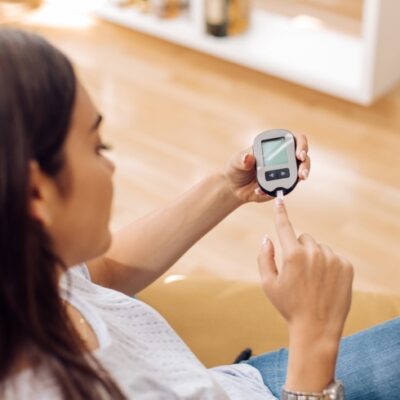Remote patient monitoring (RPM) helps patients with asthma by providing accurate and accessible devices to track patient oxygen levels consistently and efficiently. This helps with early diagnosis, prevention, and recovery. RPM also enables providers to track their patients’ well-being remotely between regulatory visits and facilitating consistent patient data collection. With remote devices like pulse oximeters, patients can record their blood oxygen levels with confidence, knowing that emergency intervention and provider assistance is readily accessible.
What is remote asthma monitoring?
Patients with asthma or asthmatic tendencies require close and careful monitoring to prevent further respiratory issues. Using daily monitoring rather than sporadic in person visits allows patients to take control over their symptoms and keep their clinicians informed without putting either party at risk of exposure to outside airborne illnesses. Remote asthma monitoring also enables clinicians to assess the efficacy of treatment and rates of recovery in patients without requiring constant in-person check-ins. RPM pulse oximeters are helpful for asthmatic patients who have difficulty breathing and suffer from low blood oxygen levels and allow clinicians to track their patients’ wellbeing from afar.
How can remote patient monitoring help with asthma?
RPM helps with asthma not only by recording daily biometrics, but by alerting clinicians of potential emergencies and tracking recovery following in person treatments. “Some patients ignore their symptoms until it becomes an emergency,” says Sue Huff, a senior director at Pediatrics At Home, stating that remote monitoring is a great way to encourage patients to stick to their treatment plan through daily reminders. During a 2018 study conducted by Pediatrics at Home, they found that out of 78 asthmatic patients, there was a 55% reduction in emergency room and hospital services after only 180 days. Paul Simonelli, MD, PhD, chair of Pulmonary and Critical Care Medicine at Geisinger, states that patients can “do a lot worse with their asthma than we know based on a three-, six-, or nine-month periodic office visit,”. Tosh Butt, AstraZeneca’s Vice President of Respiratory services, attributes this to the fact that “asthma symptoms can be unpredictable and breathing issues don’t always occur in the doctor’s office.” RPM allows clinicians to keep an eye on their patients and monitor their asthma between regular visits and gather crucial patient biometrics on a daily basis.
What happens if a patient displays signs of asthma?
RPM enables providers to go beyond in-person visits to assess and monitor an abundance of patient data to create personalized care plans. Clinicians can intervene and prevent the worsening of symptoms or illness by following this data closely and carefully. Identifying patterns in patient data can also lead to prevention and can key clinicians into possible signs of asthma. If a patient’s remote monitoring device reports vitals outside a designated range, a notification will be sent to the patient’s provider. To providers, this process is called Population Health Management (PHM) and is embedded in the most comprehensive of RPM programs.
When patients report readings outside of their designated range staff are notified. Medicare requires that clinicians receive such notifications and remain informed by their remote patient monitoring system so that they can continue to be reimbursed by the program. RPM companies make population health management and Medicare reimbursement easy, keeping patients safe and clinicians reimbursed through the program. RPM gives patients the ability to measure their pulse from the comfort of their home while ensuring that they are cared for with the most personalized management and treatment plans their clinicians can provide.



